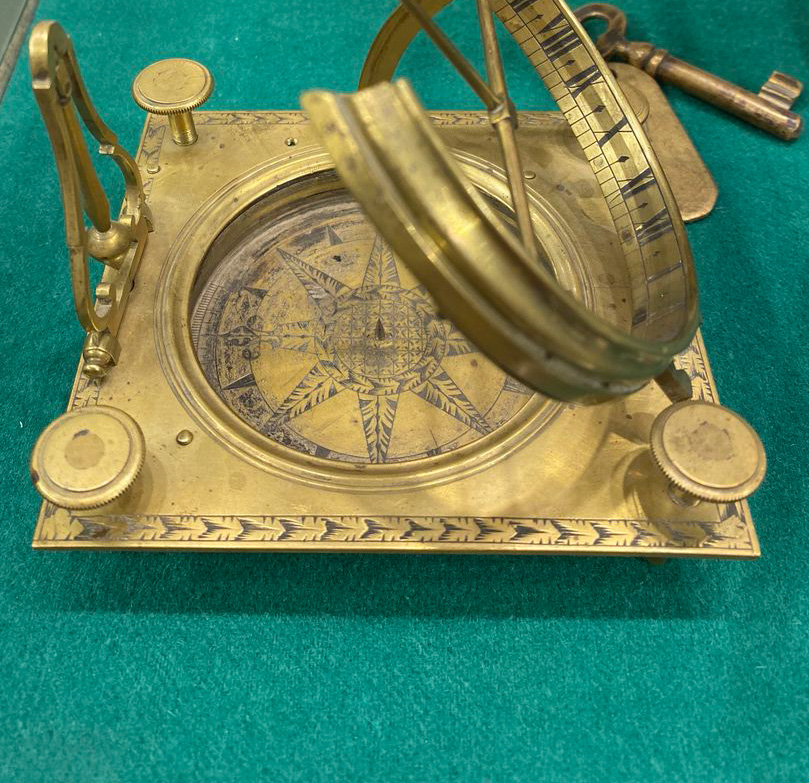More-than-two-century-old device is in excellent condition. According to Dmitry Shebalkov, the current head of the fund storage department of the Norilsk Museum, until 1980, only the time and place of the find were known about the rarity: “The receipt book says that the sundial was found in 1950 during construction work a few kilometers from Norilsk, near the mount Nadezhda. Using such a watch with a compass, you can determine the latitude and longitude. The names of cities are engraved on the back of the device base: “Moscow, Kiev, St. Petersburg, Nov Grad, Nizhny, Orel, Arzamas, Ryazan, Pereslavl, Rylsk …” – 31 cities indicating latitudes in degrees and minutes”.
Experts dated the Augsburg sundial to the 18th century, and design resembles the one of 1789 made by master Denisov. But the paleographic archaisms, that is, the peculiarities of the spelling, as well as their list, allowed the experts to assume that the clock was made in the middle of the century. A few more paleographers generally attributed them not to the middle, but to the first half of the 18th century.

The peculiarities show the age of the rarity
Based on this information, Arseny Bashkirov, the head of the museum in 1977-1984, supposed that the device belonged to Semyon Chelyuskin, a participant of the Great Northern Expedition who with his crew passed Norilskoye winter hut along a toboggan route in January – February of 1742. The researcher assumed that a few expeditions visited the Norilsk region in the 18th century, and the Great North was the first, when lieutenants Vasily Pronchishchev, Hariton Laptev and a navigator Semyon Chelyuskin took a picture and plotted the coast of the Taimyr Peninsula. Arseny Bashkirov suggested that the device fell out of the sled when the Chelyuskin “toboggan train” approached the Norilsk winter hut, and remained in the tundra.
In 1980, the essay hypothesis of the Norilsk museum director, a full member of the Geographical Society of the USSR Arseny Bashkirov, was published in the Arctic Circle art and geographic collection. However, the mystery of the origin and appearance of the “sundial of the Augsburg system, equally effective, universal” in Taimyr remained unsolved.
The sundial could belong to one of the Norilsk residents – Norilag prisoners. There were plenty of enlightened people among them, but until 1988 they did not talk about this and did not write. Arseny Bashkirov knew about the prison very well. He was arrested in the first year of the Arkhangelsk Naval School on false denunciation and sentenced to ten years. Bashkirov arrived in Norilsk as a mining engineer: after the Vorkuta prison he graduated from the Moscow Mining Institute.
The Museum of Norilsk keeps a lot of values that appeared during the Arseniy Bashkirov’s leadership. This is a collection of materials by Nikolai Urvantsev, Avraam Zavenyagin, projects by Vitold Nepokoichitsky and much more. He always took part in television programs of the Norilsk television studio and wrote about all the receipts in Zapolyarnaya Pravda newspaper, where he worked before becoming a head of the museum. But the most memorable was his hypothesis about the sundial. But it is doubtful if it will ever be proven or disproved.



